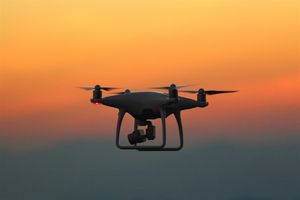
John Carroll University's Tim Russert Department of Communication has taken a significant leap forward in media education, unveiling a state-of-the-art TV Production Studio powered by advanced For-A (TYO: 6794) equipment. The upgrade, marked by a ribbon-cutting ceremony on August 25th, represents a pivotal investment in the next generation of broadcasting professionals, equipping students with industry-standard tools and preparing them for the rapidly evolving media landscape. This strategic enhancement not only solidifies John Carroll's position as a leader in communication studies but also highlights the critical role technology providers like For-A play in shaping educational outcomes and, by extension, the future workforce of the broadcast industry.
The integration of professional-grade For-A technology into an academic setting underscores a growing trend where educational institutions are mirroring professional environments to bridge the skills gap. For the financial markets, this move signifies a steady demand for high-end broadcast equipment, even outside traditional media outlets, as universities become significant purchasers. It also points to the long-term value of companies that can adapt their offerings to serve both professional production houses and educational institutions, creating a pipeline of future users familiar with their products. This development, while localized, reflects broader industry shifts towards advanced, flexible production workflows that are increasingly reliant on robust technological infrastructure.
Studio Transformation and Industry Impact
The heart of the Tim Russert Department's studio transformation lies in the installation of several key For-A products. These include the HVS-1200 Video Switcher, essential for managing and transitioning between multiple video sources in high-definition live productions; the FA-9600 Signal Processor, which provides crucial flexibility for integrating diverse inputs like wireless cameras and computer feeds; and the MV-1640IP Multiviewer, enabling comprehensive monitoring of numerous video sources simultaneously. Beyond these core components, the studio also received enhancements such as talent monitors, teleprompters, wireless handheld cameras, and high-end playback systems, creating a truly professional-grade environment.
The ribbon-cutting ceremony on August 25th (of last year, given the current date of 9/30/2025) officially launched the upgraded facilities, marking the culmination of a collaborative effort. Key players in this endeavor included For-A America, which supplied the cutting-edge technology; John Carroll University, particularly its Tim Russert Department of Communication and Blue Streak Media program; Dan Slentz, Director of Blue Streak Media, who championed the hands-on training aspect; and Brent Brossman, Chair of the Tim Russert Department, who emphasized the career preparedness this upgrade offers. While immediate market reactions to such an academic upgrade are typically muted, the long-term implications for the broadcast technology sector, particularly for companies focused on educational partnerships, are noteworthy. It demonstrates a continued investment in foundational broadcasting skills, ensuring a pipeline of talent proficient with modern tools.
Market Winners and Competitor Dynamics
This significant upgrade positions For-A Co. (TYO: 6794) as a clear winner. By securing this deal with John Carroll University, For-A not only generates revenue from equipment sales but also gains valuable market validation within the educational sector. Partnerships with prestigious academic institutions like the Tim Russert Department of Communication serve as powerful endorsements, showcasing For-A's technology to future industry leaders. This exposure can lead to increased brand loyalty among students who will eventually enter the professional broadcast world, potentially influencing their future equipment choices. For-A's stock performance could see a long-term benefit from its strategic push into educational markets, as these deals represent recurring revenue opportunities through maintenance and future upgrades, as well as a strong marketing channel.
Conversely, this deal represents a missed opportunity for For-A's competitors, such as Sony Corp. (TYO: 6758), Blackmagic Design (private), Grass Valley (private), and Ross Video (private). While these companies also offer robust broadcast solutions, For-A's successful bid highlights the competitive nature of the broadcast equipment market, where securing educational contracts can be a strategic long-term play. These competitors may need to reassess their strategies for engaging with academic institutions, potentially increasing their outreach, offering competitive pricing, or developing specialized educational packages to capture a share of this growing segment. The ripple effect could lead to increased competition for university contracts, potentially driving down margins in the short term but fostering innovation in educational solutions across the industry.
Broader Industry Significance
This event at John Carroll University fits squarely into broader industry trends, particularly the increasing adoption of IP-based broadcasting workflows and the demand for highly skilled media professionals. As the industry shifts towards more flexible, remote, and data-driven production methods, universities are compelled to update their curricula and facilities to remain relevant. The use of For-A's advanced switchers and signal processors prepares students for these modern demands, ensuring they are proficient in the latest production techniques. This trend suggests a continued robust market for broadcast equipment manufacturers who can provide adaptable and future-proof solutions.
The potential ripple effects extend to other educational institutions, which may look to John Carroll's model as a blueprint for their own media program upgrades. This could spur a wave of similar investments across universities, creating a sustained demand for broadcast technology. While regulatory or policy implications are not immediately apparent, the emphasis on professional standards in education could indirectly influence accreditation bodies to encourage more hands-on, industry-aligned training. Historically, such educational upgrades mirror the broader industry's embrace of new technologies, from the transition to color television to digital broadcasting and now IP-based production. This continuous evolution necessitates ongoing investment in both infrastructure and human capital, making events like John Carroll's studio update a bellwether for the future direction of media production education.
What Comes Next
In the short term, students at John Carroll University will immediately benefit from hands-on experience with cutting-edge broadcast technology, enhancing their learning outcomes and practical skills. This could lead to new curriculum development, allowing the Tim Russert Department to explore advanced production techniques and experimental media projects. For-A, in turn, will likely leverage this successful implementation as a case study to attract other educational clients, solidifying its position in the academic market.
Looking further ahead, the long-term possibilities are significant. Graduates from the Tim Russert Department, equipped with expertise in For-A systems, will enter the workforce with a distinct advantage, potentially becoming leaders in the broadcast and media industries. John Carroll University could emerge as a premier institution for broadcast education, attracting top talent and fostering innovation. Market opportunities may arise for companies that offer training, support, and complementary software solutions for these advanced studio environments. However, challenges remain, particularly the rapid pace of technological change; both universities and equipment providers must continually adapt to ensure relevance. Potential scenarios include further integration of virtual production and AI-driven tools into the curriculum, pushing the boundaries of what is taught and produced in academic settings.
Comprehensive Wrap-Up
The Tim Russert Department of Communication's investment in For-A (TYO: 6794) gear marks a crucial milestone in broadcast education, demonstrating a proactive approach to preparing students for a dynamic industry. Key takeaways include the growing convergence of professional and academic broadcast environments, the strategic importance of technology partnerships for both educators and manufacturers, and the continuous demand for advanced, flexible production tools. This event underscores that even localized academic upgrades can have broader implications for the financial markets, particularly for companies operating in the broadcast equipment sector.
Moving forward, the market will likely see continued investment in educational technology, driven by the need to equip future professionals with relevant skills. Investors should watch For-A's financial reports for any indication of increased sales or strategic partnerships in the educational sector, as well as monitor similar deals announced by competitor companies. The lasting impact of this upgrade will be seen in the caliber of graduates entering the media industry, armed with practical experience on leading-edge equipment, further cementing the symbiotic relationship between technological innovation and educational excellence.
This content is intended for informational purposes only and is not financial advice.





